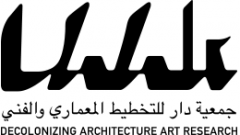Posted: 05.05.2008
Julien Lagumier, a French social anthropologist, will be talking about French colonial architecture and social housing through the issue of utopia/ heterotopia:
The global issue of how utopian models in term of conception have turned to heterotopias, while finished and appropriated by the populations because of social changes, conflicts, and segregation. I’ll present Casablanca and Algiers as two examples of French colonial cities under the influence of the ideas of modern architecture and social progress in the 60’s despite the colonial context. We’ll see how these models still reproduce the domination on local people and try to explain how they decolonized it after independence. In the same period, in France, the government answered to a strong housing crisis by applying the modern architecture principles and building housing schemes. Forty years later, these places host the poorer people, realize a perfect segregation. I’ll present how we try to answer this issue through real projects of renewal. The links between colonial architecture and housing schemes for social housing is that Algeria and Morocco have been a place of experimentations for French engineers and architects to conceive new models which have been brought back to France.






